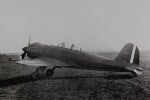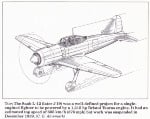Shortround6
Lieutenant General
The -17 could make 1050hp at 6500ft at 2550 rpm.
The -23 could make 950hp at 14,500ft at 2700rpm.
In test flight/s the -17 made about 1000hp hp at 10,000ft in level high speed flight with RAM,and
about 850hp at 15,000ft level high speed flight with RAM.
In test flight/s the -23 made 950hp at 17,000ft in level high speed flight with RAM,and
a
In test flight/s the -23 made 950hp at 17,000ft in level high speed flight with RAM,
An early P-40 could make 1090hp at 15,000ft in level high speed flight with RAM.
A Hurricane I could make 1030hp at 16,500ft or above level high speed flight with RAM.
The -23 could make 950hp at 14,500ft at 2700rpm.
In test flight/s the -17 made about 1000hp hp at 10,000ft in level high speed flight with RAM,and
about 850hp at 15,000ft level high speed flight with RAM.
In test flight/s the -23 made 950hp at 17,000ft in level high speed flight with RAM,and
a
In test flight/s the -23 made 950hp at 17,000ft in level high speed flight with RAM,
An early P-40 could make 1090hp at 15,000ft in level high speed flight with RAM.
A Hurricane I could make 1030hp at 16,500ft or above level high speed flight with RAM.


